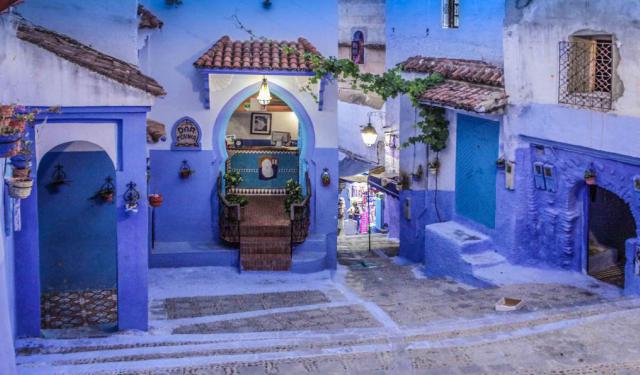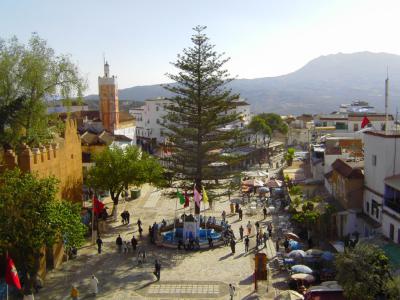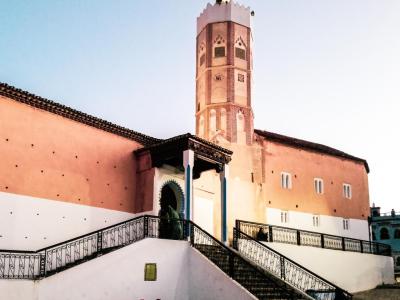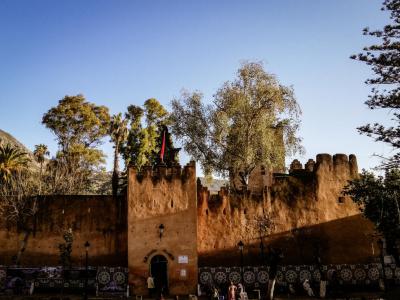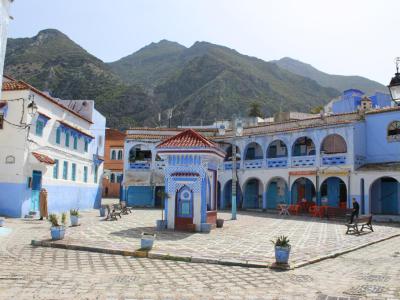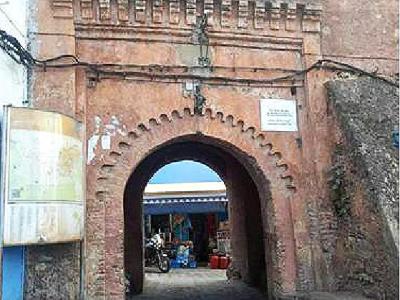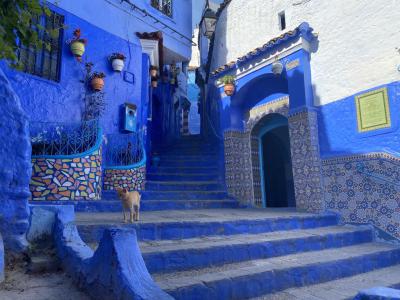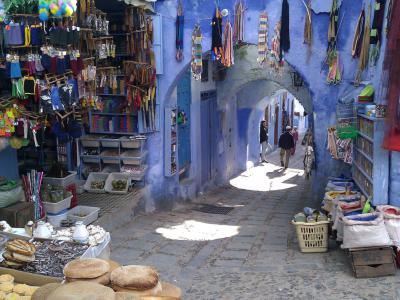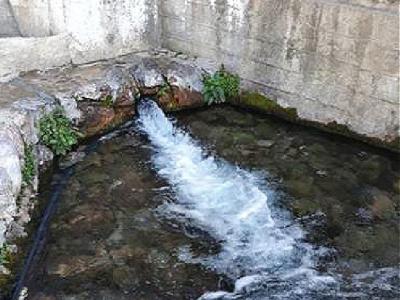Chefchaouen Introduction Walking Tour (Self Guided), Chefchaouen
Chefchaouen, the "Blue Pearl" of Morocco, is a beautiful town famed for its blue and white houses. The name "Chefchaouen" comes from the Berber words "shaf" and "shaouen," collectively meaning "look at the horns," a reference to the twin peaks of the majestic Rif Mountains overlooking the town. Founded in 1471 as a military stronghold to thwart Portuguese invasions, Chefchaouen grew with Muslim and Jewish refugees fleeing the Reconquista of Spain.
In the 20th century, Chefchaouen saw colonial occupations, including Spanish rule from 1920 and a stint in the Republic of the Rif. After Morocco gained independence in 1956, Chefchaouen and the country's northern regions were ceded by Spain.
Today, Chefchaouen's well-preserved Medina (Old City) coexists with a modern town. Its economy thrives on crafts and tourism, inviting visitors to explore its enchanting cobalt-blue streets.
Our journey begins at Uta el Hamman Square, a bustling hub of activity at the heart of Medina. A short walk from here brings you to the Grand Mosque of Chefchaouen, an architectural gem showcasing the town's rich Islamic heritage and artistic prowess.
The Kasbah and the Ethnographic Museum are next on our itinerary. The 15th-century fortress offers panoramic views of the town and surrounding mountains, while the Ethnographic Museum within its walls provides insight into Chefchaouen's history and culture, displaying traditional clothing, artifacts, and photographs.
Our exploration continues at El Haouta Square (Place El Haouta), a tranquil spot where locals gather to relax and socialize. Nearby, the Market Gate (Bab Souk) beckons with its colorful displays of handicrafts and spices – a perfect place to pick up souvenirs and immerse yourself in the town's vibrant market scene.
Venturing further, into the famous Blue Alley (Derb El Assri), you'll find yourself surrounded by the iconic blue-washed buildings that make Chefchaouen so distinctive. Wandering through this labyrinthine maze of narrow streets is an experience in itself, with surprises around every corner.
As we conclude our journey through Chefchaouen, don't forget to explore the so-called Head of the Water (Ras el-Ma), a place where fresh mountain springs flow through the town. This serene spot offers respite from the hustle and bustle, and you can even dip your toes in the cool waters.
A history enthusiast or a photography buff within you, or simply one who seeks a tranquil escape, will find Chefchaouen absolutely delightful. So, get your camera handy and embark on an unforgettable adventure to the "Blue Pearl" of Morocco!
In the 20th century, Chefchaouen saw colonial occupations, including Spanish rule from 1920 and a stint in the Republic of the Rif. After Morocco gained independence in 1956, Chefchaouen and the country's northern regions were ceded by Spain.
Today, Chefchaouen's well-preserved Medina (Old City) coexists with a modern town. Its economy thrives on crafts and tourism, inviting visitors to explore its enchanting cobalt-blue streets.
Our journey begins at Uta el Hamman Square, a bustling hub of activity at the heart of Medina. A short walk from here brings you to the Grand Mosque of Chefchaouen, an architectural gem showcasing the town's rich Islamic heritage and artistic prowess.
The Kasbah and the Ethnographic Museum are next on our itinerary. The 15th-century fortress offers panoramic views of the town and surrounding mountains, while the Ethnographic Museum within its walls provides insight into Chefchaouen's history and culture, displaying traditional clothing, artifacts, and photographs.
Our exploration continues at El Haouta Square (Place El Haouta), a tranquil spot where locals gather to relax and socialize. Nearby, the Market Gate (Bab Souk) beckons with its colorful displays of handicrafts and spices – a perfect place to pick up souvenirs and immerse yourself in the town's vibrant market scene.
Venturing further, into the famous Blue Alley (Derb El Assri), you'll find yourself surrounded by the iconic blue-washed buildings that make Chefchaouen so distinctive. Wandering through this labyrinthine maze of narrow streets is an experience in itself, with surprises around every corner.
As we conclude our journey through Chefchaouen, don't forget to explore the so-called Head of the Water (Ras el-Ma), a place where fresh mountain springs flow through the town. This serene spot offers respite from the hustle and bustle, and you can even dip your toes in the cool waters.
A history enthusiast or a photography buff within you, or simply one who seeks a tranquil escape, will find Chefchaouen absolutely delightful. So, get your camera handy and embark on an unforgettable adventure to the "Blue Pearl" of Morocco!
How it works: Download the app "GPSmyCity: Walks in 1K+ Cities" from Apple App Store or Google Play Store to your mobile phone or tablet. The app turns your mobile device into a personal tour guide and its built-in GPS navigation functions guide you from one tour stop to next. The app works offline, so no data plan is needed when traveling abroad.
Chefchaouen Introduction Walking Tour Map
Guide Name: Chefchaouen Introduction Walking Tour
Guide Location: Morocco » Chefchaouen (See other walking tours in Chefchaouen)
Guide Type: Self-guided Walking Tour (Sightseeing)
# of Attractions: 8
Tour Duration: 1 Hour(s)
Travel Distance: 1.6 Km or 1 Miles
Author: DanaOffice
Sight(s) Featured in This Guide:
Guide Location: Morocco » Chefchaouen (See other walking tours in Chefchaouen)
Guide Type: Self-guided Walking Tour (Sightseeing)
# of Attractions: 8
Tour Duration: 1 Hour(s)
Travel Distance: 1.6 Km or 1 Miles
Author: DanaOffice
Sight(s) Featured in This Guide:
- Place Outa el Hammam (Uta el Hamman Square)
- Grand Mosque of Chefchaouen
- The Kasbah and the Ethnographic Museum
- Place El Haouta (El Haouta Square)
- Bab Souk (Market Gate)
- Derb El Assri (Blue Alley)
- Chefchaouen Medina (Old City)
- Ras el-Ma (Head of the Water)
1) Place Outa el Hammam (Uta el Hamman Square)
Uta el Hamman Square stands as the historical and touristic nucleus of the city. This vibrant square, known as Outa el Hammam, captivates visitors with its Grand Mosque and minaret, as well as its charming pavement cafes and restaurants. A focal point of entertainment and interest, Outa el Hammam holds a significant place in Chefchaouen's cultural tapestry.
Downtown and bustling with life, Outa el Hammam is a magnet for tourists, offering a unique blend of historical significance and contemporary allure. This square, once a training ground for riders and martial artists, has evolved into the oldest and most iconic of Chefchaouen's squares. Visitors are drawn to the beauty of the historical monuments that envelop the square, making it an essential destination for those seeking to immerse themselves in the city's rich heritage.
Today, Outa el Hammam is not only a testament to the past but also a vibrant hub of present-day activities. Lined with shops and cultural venues, the square pulsates with the energy of daily life. Its enduring charm lies in the harmonious coexistence of rich history and contemporary vibrancy, making it a must-see locale for those exploring the enchanting city of Chefchaouen.
Downtown and bustling with life, Outa el Hammam is a magnet for tourists, offering a unique blend of historical significance and contemporary allure. This square, once a training ground for riders and martial artists, has evolved into the oldest and most iconic of Chefchaouen's squares. Visitors are drawn to the beauty of the historical monuments that envelop the square, making it an essential destination for those seeking to immerse themselves in the city's rich heritage.
Today, Outa el Hammam is not only a testament to the past but also a vibrant hub of present-day activities. Lined with shops and cultural venues, the square pulsates with the energy of daily life. Its enduring charm lies in the harmonious coexistence of rich history and contemporary vibrancy, making it a must-see locale for those exploring the enchanting city of Chefchaouen.
2) Grand Mosque of Chefchaouen (must see)
The Grand Mosque of Chefchaouen, an emblem of Morocco's rich heritage, stands proudly at the heart of Chefchaouen, near the historic kasbah in the central Place Outa Hammam. With origins dating back to the earliest period of the city, attributed to Moulay 'Ali ibn Rashid al-Alami, the mosque's exact founding date varies, encompassing perspectives from 1471 to the 16th century.
The minaret, thought to originate from the late 17th century, exhibits an octagonal shaft and stylistic resemblances to minarets under Ali ibn Abdallah Errifi's influence. Serving as the main Friday mosque, it played a pivotal role in hosting allegiance pledges from local rulers to the Sultan of Morocco and the public proclamation of royal decrees. The mosque's educational legacy is upheld through its historical madrasa, offering lessons in religious sciences.
Restored in the 19th, 20th, and 21st centuries, the mosque's features include a courtyard, prayer hall, minaret, fountain, ablutions chamber, and madrasa. The prayer hall, a vast hypostyle adorned with horseshoe arches, stands as the largest component. Unembellished interiors, characteristic of Chefchaouen's mosques, contrast with red-tiled roofing.
The exterior entrance and minaret, with its octagonal shaft and ornate decoration in three tiers, showcase Chefchaouen's artistic flair. This historical and cultural landmark, recently restored in 2006, perpetuates Morocco's architectural legacy in the vibrant city of Chefchaouen.
The minaret, thought to originate from the late 17th century, exhibits an octagonal shaft and stylistic resemblances to minarets under Ali ibn Abdallah Errifi's influence. Serving as the main Friday mosque, it played a pivotal role in hosting allegiance pledges from local rulers to the Sultan of Morocco and the public proclamation of royal decrees. The mosque's educational legacy is upheld through its historical madrasa, offering lessons in religious sciences.
Restored in the 19th, 20th, and 21st centuries, the mosque's features include a courtyard, prayer hall, minaret, fountain, ablutions chamber, and madrasa. The prayer hall, a vast hypostyle adorned with horseshoe arches, stands as the largest component. Unembellished interiors, characteristic of Chefchaouen's mosques, contrast with red-tiled roofing.
The exterior entrance and minaret, with its octagonal shaft and ornate decoration in three tiers, showcase Chefchaouen's artistic flair. This historical and cultural landmark, recently restored in 2006, perpetuates Morocco's architectural legacy in the vibrant city of Chefchaouen.
3) The Kasbah and the Ethnographic Museum (must see)
The Kasbah of Chefchaouen stands as a monumental testament to Morocco's rich history, having undergone several restoration efforts throughout the centuries. With a storied past that includes serving as a residence for governors, a military arsenal, and even a prison, this majestic fortress has played a pivotal role in shaping the city's destiny. Constructed in 1471 by Rachid Ben Ali, the Kasbah was strategically positioned on Outa El Hamman square, adjacent to the grand mosque, to safeguard Chefchaouen.
The Kasbah encompasses a mosque, residential quarters, and a protective wall that defines the heart of Chefchaouen. The medina, or old town, organically developed around this fortress, creating a harmonious blend of historical significance and everyday life.
The Kasbah's architectural splendor is characterized by a square plan, bastions, and quadrangular towers, with its main tower standing out for both its structure and purpose. The tower, boasting three floors, culminates in a spacious covered terrace accessible through meticulously restored doors.
Within the left wing of the Kasbah, an ethnographic museum was established and inaugurated in 1985. This museum serves as a repository of Moroccan heritage, showcasing an array of cultural artifacts such as traditional musical instruments, pottery, sculptures, embroidered textiles, and weaponry used in the defense of the fortress. Through its exhibits, the museum offers visitors a captivating journey into the diverse and vibrant tapestry of Moroccan culture, further enriching the experience of exploring the historic Kasbah of Chefchaouen.
The entrance fee for foreign tourists is 6€, while Moroccan visitors enjoy a reduced fee of 10 dirhams, and children under 12 enter free of charge.
The Kasbah encompasses a mosque, residential quarters, and a protective wall that defines the heart of Chefchaouen. The medina, or old town, organically developed around this fortress, creating a harmonious blend of historical significance and everyday life.
The Kasbah's architectural splendor is characterized by a square plan, bastions, and quadrangular towers, with its main tower standing out for both its structure and purpose. The tower, boasting three floors, culminates in a spacious covered terrace accessible through meticulously restored doors.
Within the left wing of the Kasbah, an ethnographic museum was established and inaugurated in 1985. This museum serves as a repository of Moroccan heritage, showcasing an array of cultural artifacts such as traditional musical instruments, pottery, sculptures, embroidered textiles, and weaponry used in the defense of the fortress. Through its exhibits, the museum offers visitors a captivating journey into the diverse and vibrant tapestry of Moroccan culture, further enriching the experience of exploring the historic Kasbah of Chefchaouen.
The entrance fee for foreign tourists is 6€, while Moroccan visitors enjoy a reduced fee of 10 dirhams, and children under 12 enter free of charge.
4) Place El Haouta (El Haouta Square)
El Haouta Square, situated on Rue Chefchaouen, is a must-visit picturesque square that captivates visitors with its unique architecture and charming ambiance. The name "Hawta," meaning surrounded or walled in, perfectly describes the character of this square. Adorned with blue-tiled buildings featuring classic arches and iron grills, the square creates a delightful and distinctive atmosphere. The beautifully patterned and cobbled floor adds to its allure.
At the heart of El Haouta Square, a four-sided fountain provides locals with refreshing drinking water, contributing to the lively and communal spirit of the square. Visitors can unwind on benches, enjoy a drink, and soak in the surroundings, all while capturing the beauty through countless photographs. The square's small size and unique features make it an ideal location for picturesque moments.
For a particularly striking contrast in photos, where the foreground is shaded and the background is illuminated by the warm hues of the sunset, it is recommended to visit El Haouta Square in the afternoon. This charming square invites exploration, relaxation, and the creation of lasting memories against the backdrop of Chefchaouen's distinctive blue beauty.
At the heart of El Haouta Square, a four-sided fountain provides locals with refreshing drinking water, contributing to the lively and communal spirit of the square. Visitors can unwind on benches, enjoy a drink, and soak in the surroundings, all while capturing the beauty through countless photographs. The square's small size and unique features make it an ideal location for picturesque moments.
For a particularly striking contrast in photos, where the foreground is shaded and the background is illuminated by the warm hues of the sunset, it is recommended to visit El Haouta Square in the afternoon. This charming square invites exploration, relaxation, and the creation of lasting memories against the backdrop of Chefchaouen's distinctive blue beauty.
5) Bab Souk (Market Gate)
Bab Souk is steeped in history, serving as one of the primary gates to the old city, with its entrance from the northwest. Renowned for its weekly market, the gate earned alternative names such as "Bab al-Montayn" or "Bab Lathnin" in the local dialect, a nod to the market day, which traditionally fell on Mondays. The wooden door, which adorned Bab Souk, stood resiliently until the late eighties of the last century, making it a nostalgic emblem of the city's past.
Bab Souk is not only a gateway to the old city but also serves as the vibrant market area of the city, boasting an array of small stores offering authentic Moroccan products. The traditional souk, or bazaar, within this area is a treasure trove of Moroccan craftsmanship. Local artisans showcase their skills through an array of colorful porcelain utensils, textiles, clothing, leatherware, and an assortment of souvenirs. The market's charm lies in its ability to offer visitors an authentic Moroccan shopping experience, where they can immerse themselves in the rich tapestry of the local culture and bring home unique, handcrafted treasures.
Bab Souk is not only a gateway to the old city but also serves as the vibrant market area of the city, boasting an array of small stores offering authentic Moroccan products. The traditional souk, or bazaar, within this area is a treasure trove of Moroccan craftsmanship. Local artisans showcase their skills through an array of colorful porcelain utensils, textiles, clothing, leatherware, and an assortment of souvenirs. The market's charm lies in its ability to offer visitors an authentic Moroccan shopping experience, where they can immerse themselves in the rich tapestry of the local culture and bring home unique, handcrafted treasures.
6) Derb El Assri (Blue Alley)
The Blue Alley stands out as one of the most captivating and frequently photographed alleys in this enchanting blue town. The vibrant imagery is created by the addition of colorful pots that adorn the iconic blue walls, providing an ideal backdrop for capturing the charm of Chefchaouen.
To enhance the visual impact of your photographs, consider wearing bright and contrasting clothes, ensuring that you stand out against the blue background. For the best lighting conditions and minimal shadows, it is advisable to explore Derb El Assri before 10 am, allowing you to fully appreciate the picturesque beauty of this unique alley.
To enhance the visual impact of your photographs, consider wearing bright and contrasting clothes, ensuring that you stand out against the blue background. For the best lighting conditions and minimal shadows, it is advisable to explore Derb El Assri before 10 am, allowing you to fully appreciate the picturesque beauty of this unique alley.
7) Chefchaouen Medina (Old City) (must see)
Chefchaouen Medina captivates visitors with its enchanting labyrinth of winding alleyways, picturesque doorways, and charming plazas, all adorned in myriad shades of blue. Despite the bustling tourism that paints its streets with diverse cultures, Chefchaouen's medina remains an irresistible destination. This historic quarter is a timeless maze of narrow, meandering alleys that unveil hidden corners and delightful spots throughout the town.
As you navigate the alleys, you'll encounter stunning doorways, vibrant plant pots adorning the streets, and a plethora of charming cats adding to the picturesque ambiance. The streets of Chefchaouen are a feline haven, with adorable cats and kittens enhancing the medina's allure. While the temptation to cuddle these furry residents may be strong, it's advisable to admire them from a distance due to occasional reports of rabies infections among tourists.
The old medina of Chefchaouen is an immersive experience where every twist and turn reveals captivating squares, captivating doors, and dead-end alleys, each a photogenic delight. It serves as a window into the local way of life, offering a glimpse into the daily routine of the residents. However, it's crucial to approach photography with respect for the locals, especially when children are present. Seeking permission before capturing moments ensures a harmonious interaction with the community. For those aiming to capture the essence of the medina without the crowds, an early morning stroll before 9 am unveils the tranquil beauty of Chefchaouen's streets.
Numerous narrow alleys within the Medina are home to quaint bazaars showcasing an array of local crafts, arts, clothing, and traditional souvenirs. Chefchaouen boasts a reputation for its exquisite handmade items, including vibrant carpets, Moroccan lamps, jewelry, caftans, woven baskets, and more. The visual spectacle of these colorful goods against the backdrop of blue walls is truly delightful. While the abundance of displayed wares may create a somewhat confined atmosphere, meandering through these petite bazaars offers a sensory journey. Alongside the market stalls, you'll encounter bustling workshops where locals passionately craft their goods. Ibn Asskar Street, situated in the heart of the Medina, is one such vibrant thoroughfare awaiting exploration.
As you navigate the alleys, you'll encounter stunning doorways, vibrant plant pots adorning the streets, and a plethora of charming cats adding to the picturesque ambiance. The streets of Chefchaouen are a feline haven, with adorable cats and kittens enhancing the medina's allure. While the temptation to cuddle these furry residents may be strong, it's advisable to admire them from a distance due to occasional reports of rabies infections among tourists.
The old medina of Chefchaouen is an immersive experience where every twist and turn reveals captivating squares, captivating doors, and dead-end alleys, each a photogenic delight. It serves as a window into the local way of life, offering a glimpse into the daily routine of the residents. However, it's crucial to approach photography with respect for the locals, especially when children are present. Seeking permission before capturing moments ensures a harmonious interaction with the community. For those aiming to capture the essence of the medina without the crowds, an early morning stroll before 9 am unveils the tranquil beauty of Chefchaouen's streets.
Numerous narrow alleys within the Medina are home to quaint bazaars showcasing an array of local crafts, arts, clothing, and traditional souvenirs. Chefchaouen boasts a reputation for its exquisite handmade items, including vibrant carpets, Moroccan lamps, jewelry, caftans, woven baskets, and more. The visual spectacle of these colorful goods against the backdrop of blue walls is truly delightful. While the abundance of displayed wares may create a somewhat confined atmosphere, meandering through these petite bazaars offers a sensory journey. Alongside the market stalls, you'll encounter bustling workshops where locals passionately craft their goods. Ibn Asskar Street, situated in the heart of the Medina, is one such vibrant thoroughfare awaiting exploration.
8) Ras el-Ma (Head of the Water)
Ras el-Ma translates to "Head of the Water" in Arabic. This locale marks the point where fresh mountain water gently flows into the town, creating a tranquil oasis. Popular among locals, Ras el-Ma serves as a communal gathering spot where residents come to wash their clothes and engage in friendly conversations. The refreshing waterfalls provide a delightful escape from the heat, offering both respite and a glimpse into the daily life of the town. Unlike the more remote and majestic waterfalls in the surrounding mountains, Ras el-Ma offers a convenient and accessible retreat, making it a cherished meeting place for the people of Chefchaouen.
The Most Popular Cities
/ view all
